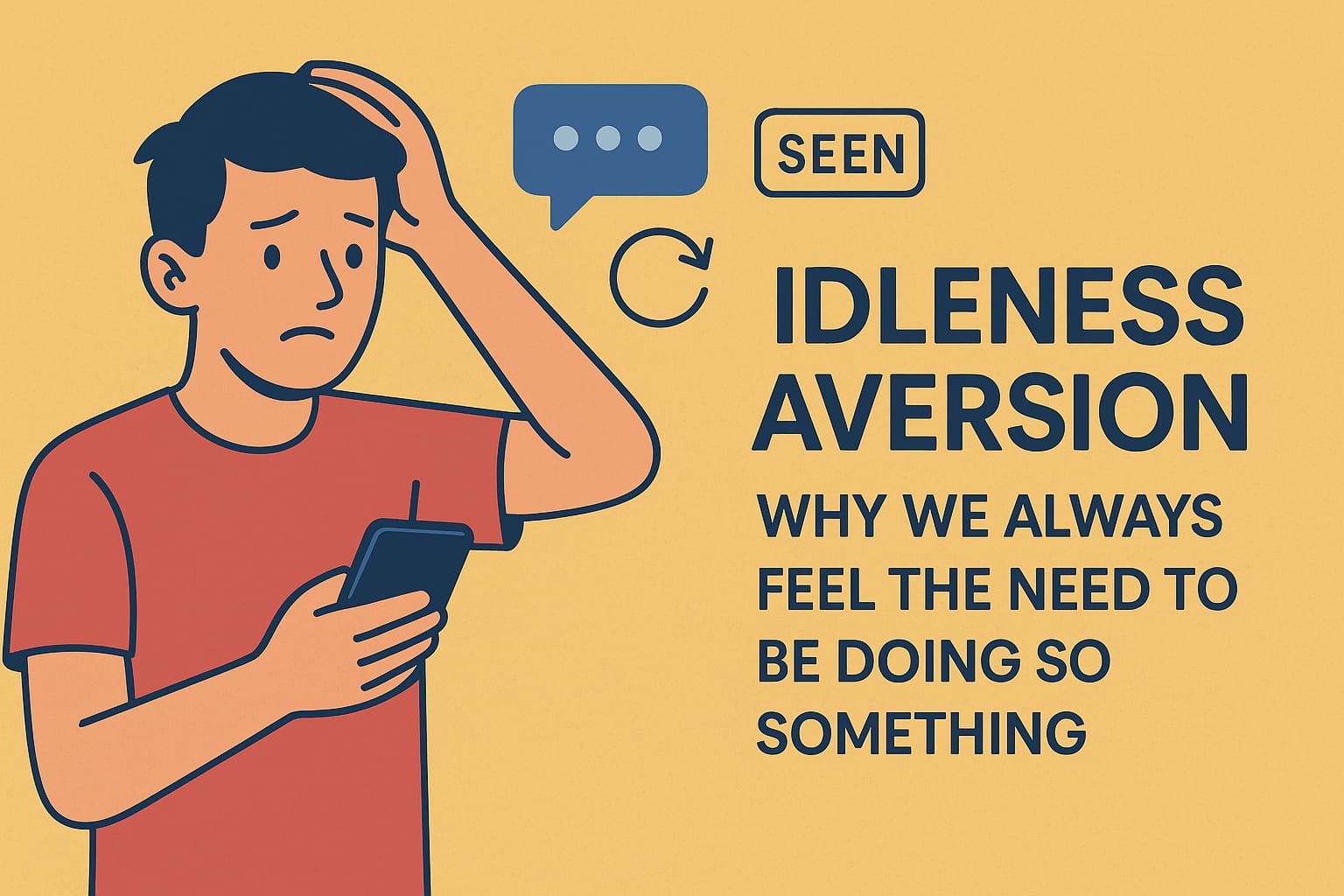Idleness Aversion: Why We Always Feel the Need to Be Doing Something
Have you ever caught yourself reaching for your phone the
second you had nothing to do?
Maybe you're waiting in a queue, sitting alone in silence,
or just standing by while food is cooking—and suddenly, without even thinking,
you unlock your phone and scroll through an app.
You weren’t bored. You weren’t looking for anything. You
just didn’t want to sit still.
If that sounds familiar, you’ve experienced something called
idleness aversion.
🌱 What Exactly Is
Idleness Aversion?
Idleness aversion is our natural discomfort with
being still or doing nothing. Even for a few seconds, our minds feel uneasy
when there’s no activity happening.
So what do we do? We try to fill the gap—by tapping,
checking, scrolling, or doing anything that makes us feel like
something’s going on.
It’s not about productivity. It’s about staying mentally
occupied—even if the action is unnecessary.
📱 Real-Life Moments Where
Idleness Aversion Shows Up
🔁 Ever caught yourself
scrolling endlessly on social media?
You open an app “just for a minute,” and then you're
watching one reel after another, not even noticing how much time has passed.
Why?
Most social media platforms are built to keep feeding you
content automatically. They’re designed so you never reach an end—and never
have a reason to stop.
Even little things like:
- “Typing...”
- “Seen”
indicators
- Loading
animations
...are there to make sure your brain always feels like
something is happening.
You may have noticed how even tiny features like “typing…”
or “seen” in messaging apps keep you hooked. The moment you see someone
typing, your brain stays alert, expecting something to happen. And if they’ve
seen your message but haven’t replied, you often find yourself reopening the
chat repeatedly, wondering why. These simple indicators give the feeling
of activity and reduce the discomfort of waiting in silence—even when nothing
is really happening.
📦 Do you keep checking
your order status?
You know your delivery is arriving later in the evening—but
you check the status multiple times a day anyway.
You see updates like:
- Order
confirmed
- Packed
- Shipped
- Out
for delivery
- Arriving
soon
Each of these small steps makes you feel like progress is
happening—even if the item isn’t arriving any faster.
It’s not about needing the information. It’s about avoiding
that feeling of “just waiting.”
🍽️ Do you track your food
delivery like it’s a countdown?
Once you place your food order, you keep watching the
updates roll in:
- Order
accepted
- Food
is being prepared
- Delivery
partner assigned
- Picked
up
- On
the way
You might even watch the map as the delivery person moves
toward your location.
Even though you know watching won’t make it come faster, it
makes the wait feel active instead of passive.
🚌 Do you keep checking
travel or bus tracking?
You’re traveling somewhere and the vehicle is already on its
way—but you keep checking its live location again and again.
It’s not that it’s late. You just want to see movement. That
visual progress makes the waiting feel easier—even when it changes nothing.
🔄 Do you unlock your
phone just to check for... nothing?
Sometimes we open our phones out of pure habit, even when
we’re not expecting a message or notification.
In short moments of stillness—while waiting, walking, or
pausing—we often reach for our screens just to avoid silence.
🧠 What’s Really Going On?
All of these habits are different, but the root is the same:
We don’t like doing nothing.
Even when there’s no reason to act, our brain wants to avoid
the feeling of stillness. We prefer to see or do something—no
matter how small—because it makes us feel like time isn’t being wasted.
🔍 Why Does It Matter?
Idleness aversion shows up in many small, unnoticed moments.
It affects the way we interact with technology and how we spend our time.
That’s idleness aversion.
By understanding it, we can start recognizing the ways we
constantly try to escape silence—even though sometimes, that silence might be
what we really need.
Because not every moment needs to be filled.

Comments
Post a Comment